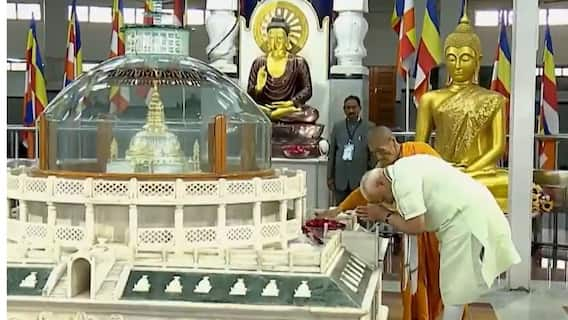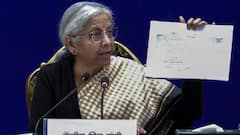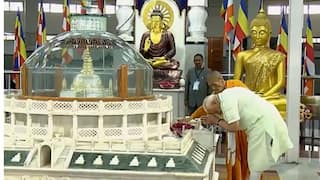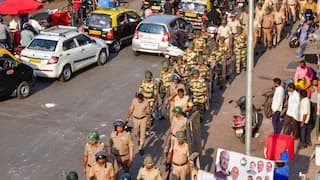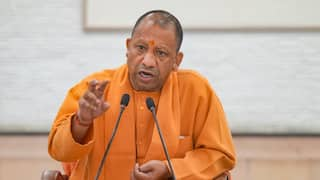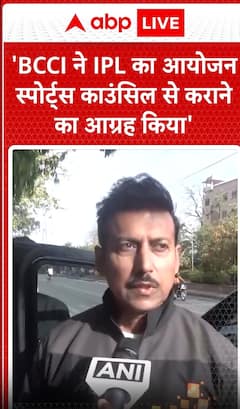Explorer
Budget 2019: Why FinMin Must Focus On Digital Channels To Stride Towards Financial Inclusion In India
The last term focused heavily on introducing various financial inclusion programs like - Jan Dhan Yojana, Jan Suraksha, Digi-Dhan Vyapar Yojana for Merchants and many more to serve India’s un-banked and under-banked segment.

The convergence of financial services, technology and distribution has enabled rapid strides towards financial inclusion. (Image: Getty)
Budget 2019: After a consecutive majority mandate received by the BJP government, there is great anticipation around the presentation of Union Budget 2019. Market stakeholders are following Finance Minister Nirmala Sitharaman’s maiden budget proceedings with keen anticipation. The strength of its electoral mandate enables the government to initiate long-term transformational projects. The last term focused heavily on introducing various financial inclusion programs like - Jan Dhan Yojana, Jan Suraksha, Digi-Dhan Vyapar Yojana for Merchants and many more to serve India’s un-banked and under-banked segment. The convergence of financial services, technology and distribution has enabled rapid strides towards financial inclusion in the last few years.
In India, traditionally to distribute financial services banking channel was required to have a wide distribution network. However, as the applications of FinTech evolves with innovative use cases, its rapid pace is helping shift the paradigm across all industries and enable distribution like never before. From innovative lending platforms to digital payments speeding up adoption across industries, the use case is wide spread. It is estimated that within the next four years, nearly 60 per cent of India’s GDP would be an outcome of digital transformation trends.
Our economy is still largely cash based, more than 45 per cent of the country’s bank accounts have no transactions and only 13 per cent Indian adults borrow through formal channels. The creation of a regulatory, social, commercial and infrastructure framework that will help in the creation of the last mile access of financial and other primary services to the larger India is one of the primary needs of the subcontinent.
The current financial landscape
India is going through a rapid financial evolution. The country has an unparalleled underlying financial infrastructure core, unlocking innumerous possibilities for FinTech to innovate, thrive, and sustain. The payment space currently stands as one of the leading use case of FinTech, but, significant progress are also being made in lending, investment and insurance. Digitization of payment services has been a boon for businesses as well as individuals, with transactions being instantaneous and more secure. With a robust rise in the ownership of mobile phones and the advent of cheap data, people have become confident in making mobile based digital payments. Integration of unique identity like Aadhaar with the digital infrastructure has enabled financial access to the common man, which otherwise would have been difficult.- Of course the already digital savvy users are finding the depth in the discounts/cashbacks available with UPI-enabled offerings.
FinTech in India has evolved much beyond accepting payments. From being merely transactional, it has now become transformational helping age old businesses like restaurants or grocery stores to improve their user experience and expand their network. Digital Pay on Delivery options, innovative lending solutions for both retail and businesses, discovery platforms for various financial products like lending or insurance, peer to peer financial services and many more, the impact of fintech cuts across segment and industries, helping Indians lead a better life across the social strata.-
Expectations from the government
Through fin-tech solutions, enterprises have enabled local kirana store owners and other local marketers to offer an array of financial services without much investment. The companies in this segment are actively utilizing payment services such as Aadhaar based payment solutions, UPI, Bharat QR, Mobile POS and Card not Present payment options. The key demand from the government is to encourage this empowering change as much as possible. Aadhaar enabled payment devices and Micro ATMs similar in design to POS devices have been provided to many local store owners to facilitate transactions in their locality. This device makes it easy to access Government funded DBT for the common man and also provides easy access of money for citizens at large. It would be encouraging for the pro digital government to make these devices available for free to the local Business Correspondent directly from NABARD. It would help in promoting digital payments in line with the government's intent.
Furthermore, as distribution forms a key peg and is one of the primary drivers to create last mile access, it is important to create an environment where the last level agent is incentivised to enter this business. A key area to look at in this direction is the exclusion of TDS on commission paid to retailers working for financial inclusion. A last level agent who deals with the end customers may not have the right means to apply for a no TDS certificate and still bear TDS while earning lower than the minimum slab. We request the government to help us remove the burden of TDS on them. Financial inclusion and creation of employment opportunities are the two main pillars that will ensure that the economically deprived sections of our society get a chance to change their circumstances and lead better lives. In the last interim budget, the government’s announcement to create 1 lakh digital villages in the next 5 years is a great initiative in that direction.
While FinTech is seen as an enabler of financial inclusion, the skewed adoption, due to multiple and unclear regulations, poses a challenge. Moreover, the dynamics of FinTech keep evolving due to contextual relevant controls from regulations.As we speak, there is seriousness on the GDPR implementation and data localisation. In parallel, regulators like RBI, SEBI, and IRDA are progressively working to facilitate innovation through Regulatory Sandbox program. DPIIT (erstwhile DIPP) has done a fabulous job at empowering the Startup ecosystem and it continues to evolve the program under the leadership of Shri Ramesh Abhishek. By adapting to different changes in the regulatory environment, leveraging the present infrastructure,and bringing out new and innovative offerings accordingly, the upcoming budget has the potential to chart a new direction for Fintech in India, one that promises a scalable and sustainable financial inclusion of the underserved segment.
The road ahead
The Indian FinTech ecosystem is at a nascent stage and the potential ahead is humongous.A huge percentage of population remains untapped and unserved to this day, thereby presenting several key opportunities for FinTech players to tap into. Every Indian is unbanked after 2 pm because banks are closed and every Indian in under-banked before 2 pm because there is lot of crowd at the bank branches. Financial sector reforms have been progressing over many years and with evolving dynamics, a fantastic work has been implemented by National Payments Council of India under the direct supervision and guidance of Reserve Bank of India. Mobile network operators have served as force multiplier in substantially increasing internet access at the last mile. Faster than we will think, India will surprise the globe with digital services access in Tier-III, Tier-IV towns and beyond, by ensuring easy on-boarding and use by the tech oblivious users.
Banks and FinTech players are the twin pillars for outreach of inclusion and these, together with active government support, are harnessing the potential to address all the challenges in the current landscape. Through an increased penetration of financial and digital services in the remotest locations, a strengthened regulatory framework, the assisted financial services sector will assume a pivotal role in shaping up the future of Indian economy. The journey begins with the upcoming budget.
(Author of the article is Anand Kumar Bajaj, Founder & CEO, PayNearby)
Disclaimer: The opinions, beliefs and views expressed by the various authors and forum participants on this website are personal and do not reflect the opinions, beliefs and views of ABP News Network Pvt Ltd.
Follow Business News on ABP Live for more latest stories and trending topics. Watch breaking news and top headlines online on ABP News LIVE TV
View More
Advertisement
Trending News
Advertisement
Advertisement
Top Headlines
Cities
India
World
India
Advertisement








